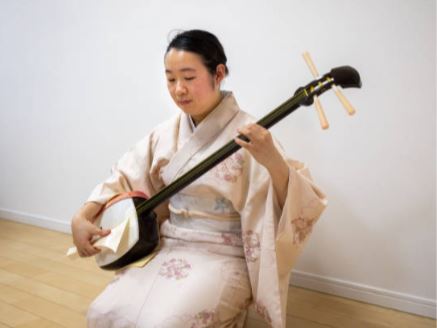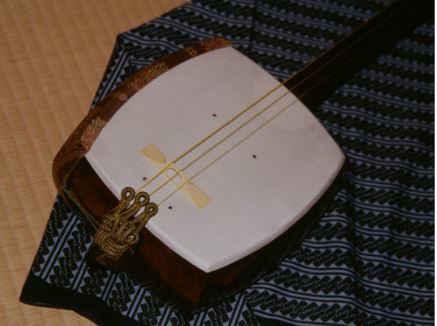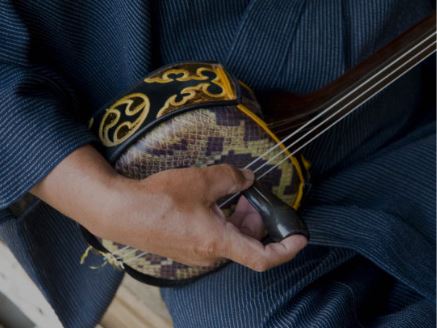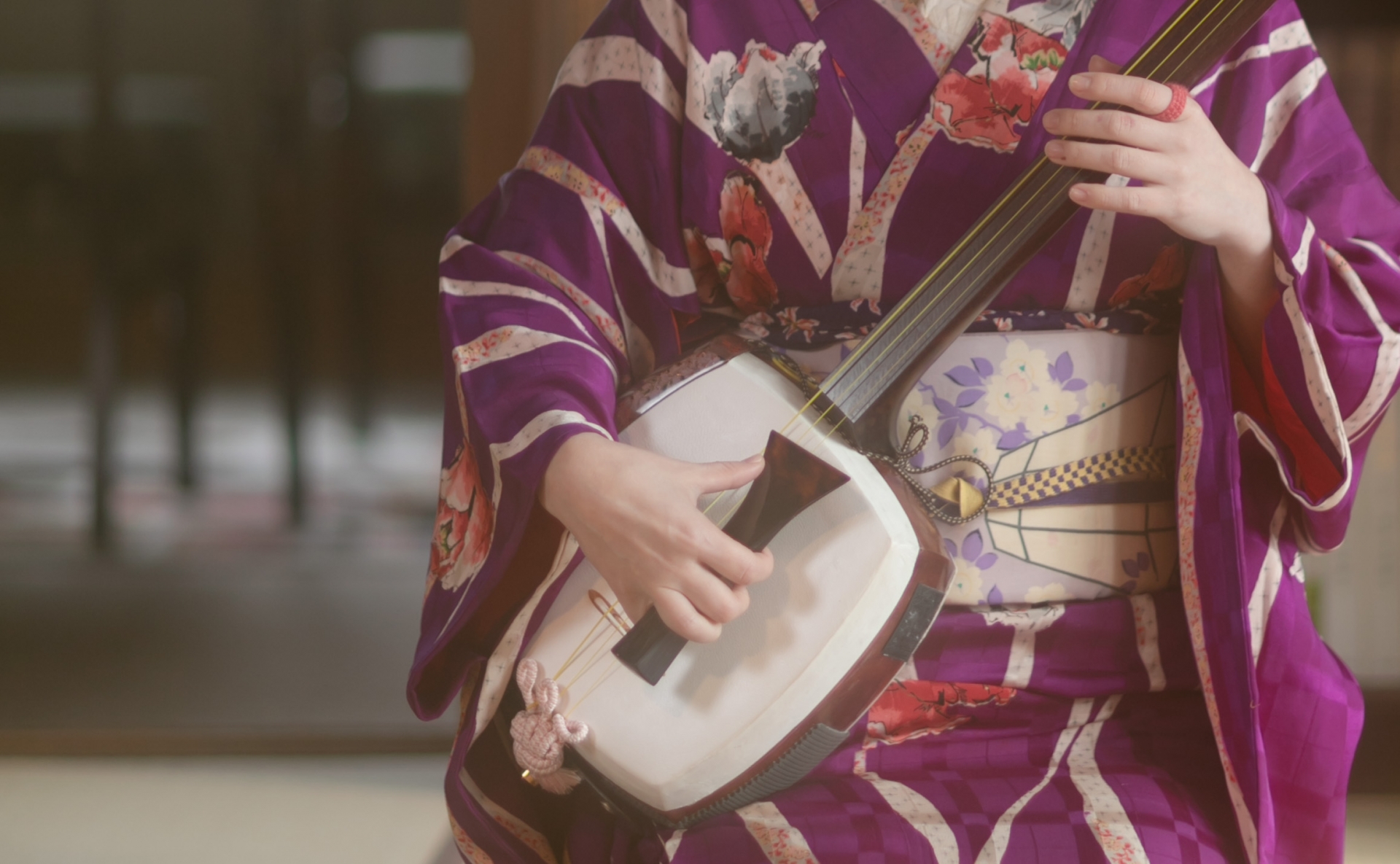Konnichiwa! Today, let’s discuss the shamisen, a Japanese instrument renowned for its expressive nature and cultural significance. Join me as we uncover the instrument’s rich history, explore its construction, delve into the captivating melodies it produces, and discover the differences between the shamisen and the sanshin.
What is a Shamisen?
The shamisen is a traditional Japanese musical instrument with a distinctive sound, featuring a three-stringed lute-like body, a stretched animal skin covering, and a long neck. It is played using a plectrum called a bachi to strike and pluck the strings, creating a wide range of melodies and rhythms.

Planning a trip to Japan?
History of the Shamisen
To understand the essence of the shamisen, we must first journey through time to ancient Japan. Originating in the 16th century, the shamisen evolved from the Chinese sanxian and found its place in traditional Japanese music. Initially played by traveling entertainers, it eventually gained popularity among the aristocracy, influencing various musical genres and regional styles across the country.
What Sound does a Shamisen Make?
The shamisen is capable of producing an array of captivating melodies, ranging from lively folk tunes to soul-stirring ballads. Its resonant sound and distinctive timbre evoke a wide range of emotions, bringing stories to life through music. From the energetic rhythms of Tsugaru-jamisen to the elegant melodies of Jiuta, the shamisen showcases the richness and diversity of Japanese musical traditions. Check the following video to hear what a shamisen sounds like.
What is a Shamisen Made Of?
Let’s take a closer look at the components that give the shamisen its unique identity:
Body: The shamisen’s body consists of a hollowed-out wooden resonator, traditionally crafted from paulownia wood. Its distinct shape, often likened to a cat’s face, contributes to the instrument’s aesthetic appeal and resonance.
Skin: The shamisen’s body is covered with a stretched animal skin, traditionally using cat, dog, or snake skins. However, due to ethical concerns, modern shamisen often use synthetic skins or plastic alternatives, providing a comparable sound while respecting animal welfare.
Neck: Attached to the body is the long, slender neck made of hardwood, such as rosewood or cherry. It features frets, typically made of ivory or plastic, enabling precise intonation and melodic variations.
Strings: The shamisen usually has three silk or nylon strings, each with its own purpose. The thicker string, called the dō, produces the bass notes, while the thinner strings, ni-no-ito and ichi-no-ito, provide melodic accompaniment.
What is a Bachi?
A shamisen pick, also known as a bachi, is typically made of a dense, hard material to produce a crisp and distinct sound when striking the strings. Traditionally, the bachi was crafted from ivory, tortoiseshell, or bone. However, due to ethical concerns and regulations regarding animal products, modern bachi are commonly made from synthetic materials or various types of plastic.
Synthetic bachi often utilize materials such as acrylic or nylon, which can closely mimic the characteristics and feel of traditional materials while ensuring ethical and sustainable production. These synthetic options offer durability, consistency, and a wide range of designs and shapes to suit the preferences and playing styles of different musicians.
It’s important to note that the choice of bachi material can affect the sound produced by the shamisen. Musicians may experiment with different materials and shapes to achieve their desired tone and playing technique, ultimately finding a bachi that best complements their personal style and musical expression.

How are Shamisen and Sanshin Different?
What Sets Them Apart? While the shamisen and sanshin share similarities, it’s important to note their distinct characteristics:
Origin and Influence: The shamisen originated in mainland Japan and was strongly influenced by Chinese musical traditions. In contrast, the sanshin hails from Okinawa, an island with a unique cultural heritage.
Construction: The shamisen has a larger body compared to the sanshin, resulting in a deeper and more resonant sound. Additionally, the materials used for the skins and strings differ, contributing to variations in tonal qualities.
Picks: Shamisen picks (bachi) are typically larger and heavier compared to sanshin picks (tun). They are designed to accommodate the larger size and tension of the shamisen strings and body. Shamisen bachi often have a thicker, wider profile, allowing for a more forceful and pronounced strike on the strings. The increased size and weight of the bachi contribute to the distinctive sound and projection of the shamisen.
Musical Styles: The shamisen is renowned for its versatility and is commonly used in various traditional Japanese music genres, such as Kabuki, Nagauta, and Minyo. The sanshin, on the other hand, is deeply rooted in Okinawan folk music and embodies the spirit of the region’s unique traditions.


The Evolution of Shamisen Skins
Over time, the choice of skins for the shamisen has evolved due to various factors, including availability and ethical considerations. Initially, the instrument employed cat skins for their desirable tonal qualities. However, as concerns for animal welfare grew, alternative skins such as dog and snake became prevalent. In recent times, the use of animal skins has been largely replaced by synthetic materials or plastic alternatives. These modern options provide similar tonal characteristics while addressing the ethical concerns associated with animal products. The transition to synthetic skins has allowed for greater accessibility to the instrument and has paved the way for its continued evolution in contemporary music.
The Timeless Legacy
The shamisen’s enduring popularity can be attributed to its ability to transcend time and connect people through its evocative melodies. Whether you’re a seasoned musician or a curious listener, the shamisen invites you to immerse yourself in the rich tapestry of Japanese musical traditions. Its enchanting sounds not only captivate the ears but also serve as a gateway to understanding and appreciating the cultural heritage of Japan.

Final Thoughts
So, what is a shamisen? As we conclude our exploration of the captivating shamisen, we’ve uncovered its historical roots, examined its construction, and marveled at the melodic wonders it produces. We’ve also discovered the differences between the shamisen and the sanshin, highlighting their unique characteristics and regional influences. From ancient traditions to modern adaptations, the shamisen continues to enchant audiences around the world with its timeless charm.
So, whether you find yourself strumming the strings of a shamisen or simply savoring its melodies as a listener, let the harmonious sounds of this remarkable instrument transport you to the heart of Japanese musical culture.
Remember, music has the power to bridge gaps, transcend boundaries, and foster a deep appreciation for diverse cultural expressions. So, embrace the enchanting world of the shamisen and embark on a melodic journey that resonates with the beauty of Japanese musical traditions.
Disclaimer: If you use the link on this page to purchase travel insurance, we will receive a fee from Freely, a brand of Cover-More Insurance Services Pty Limited ABN 95 003 114 145 (AFSL 241713) (Cover- More). We do not act for Cover-More or Freely. The information provided is only on the availability of Freely products. We do not give advice & the information provided is not intended to give an opinion or recommendation regarding the product. For information on how to contact Cover-More or Freely refer to the PDS, FSG & TMD which can be found on the Freely website.


